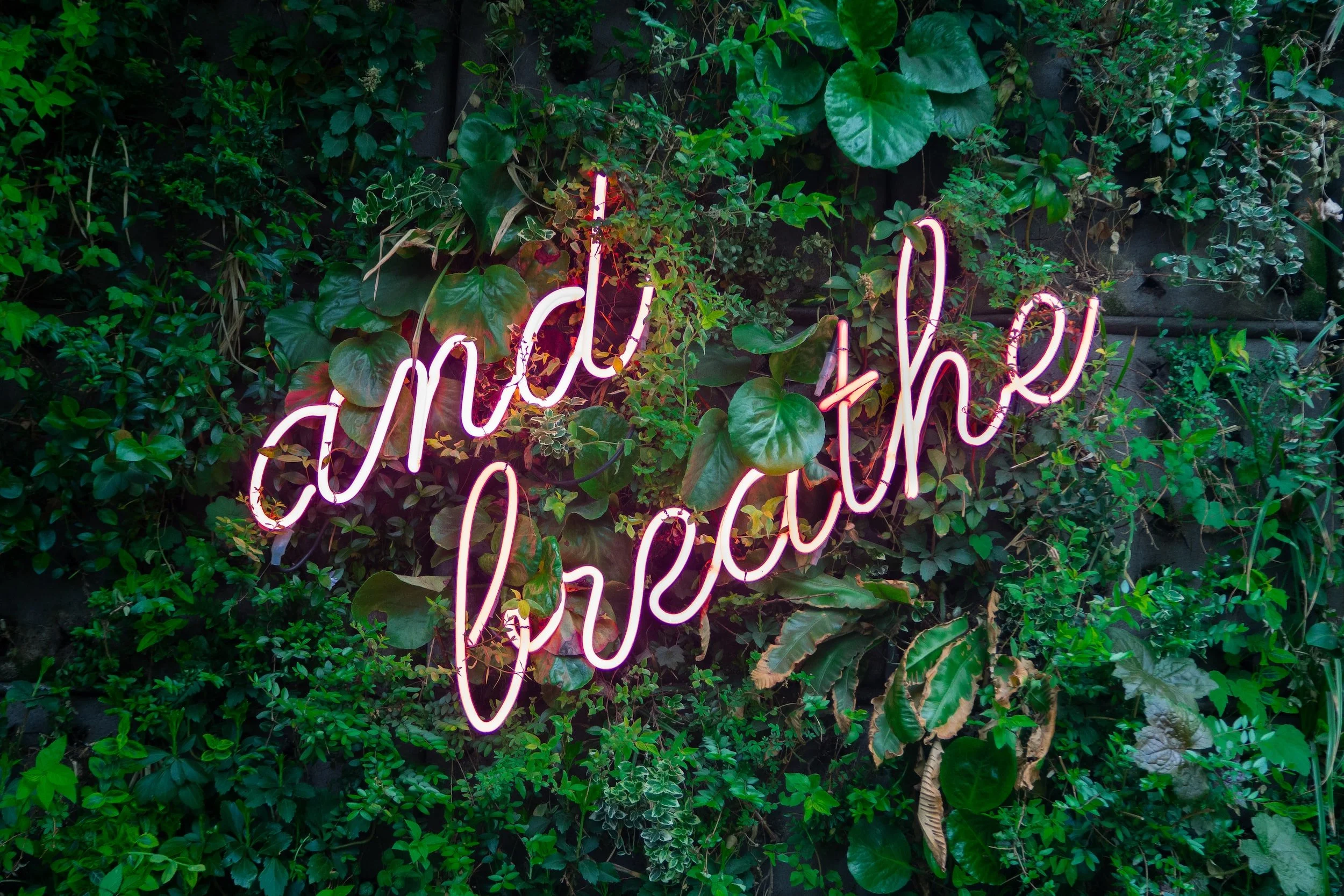Stress hits us all a little differently, but not one of us is immune to it. Our team at KJ Consulting talks about stress a lot in order to normalize its existence and focus on ways to calm it versus ways to avoid it outright. Stress is the body’s way of letting you know some form of danger is approaching. And while said danger COULD be physical, more often than not it is an internal trigger that, when not addressed, can quickly become consuming.
For me, I often feel the effects of stress before I can process the cause. It’s a little ache that starts at the between my shoulder blades. Not debilitating - I may pause to tilt my head back and forth in an effort to erase it, shrug my shoulders up and down. But because I have been conditioned to persevere rather than linger in discomfort, I often push through. And when I do, the stress my body was warning me about with a little signal can sometimes grow to consume my entire body. If I ignore it and let it build up, this stress can grow to fuel feelings of self-doubt, make me feel alone, and convince me that I am not capable of doing whatever task may be in front of me.
But the reality is that it’s not so much AVOIDING this consuming stress that helps, but having the tools to quiet it when it does arrive - to shrink it before it has the chance to grow. We’ve found with our own team and with the teams we support through KJ Consulting, that:
(1) reminding folks that stress is normal is KEY and
(2) a simple mantra - regulate, relate, reason - can have incredible calming power when we notice those warning signals of stress.
Regulate | Relate | Reason
The “regulate, relate, reason” framework comes from Dr. Bruce Perry, a renowned trauma psychologist. We’ve blogged about it previously, and that’s partly because our team talks about it constantly. Whether we’re working with clients or self-evaluating, it’s a reminder that when stress surfaces, we must first ensure our physical safety needs are met, to calm our minds before we can rationally interact with others and/or problem solve. After the body is regulated, we can contemplate addressing relational needs and then engage in more complex thought or reasoning.
Regulation Self-Check
When you notice stress starting to creep into your body, go back to the basics. Physical safety involves more than your physical location, although that may be part of it. It also involves addressing your basic needs. Are you in need of a healthy meal? A large glass of water to hydrate? A walk around the block or house for some extra movement? Is the light in your space too bright? Might some calming music relax the feel of the space around you? If the answer to any of these questions is YES or even PROBABLY, listen to your body and give it what it needs.
Regulation Strategy 1: Vagus Nerve Neck Mobility
One quick regulating exercise that our team loves is the Vagus Nerve neck mobility exercise. This activity is good to break patterns of tension and shift out of an activated state of mind - to be a little more calm and present. Try it out:
Get seated in a comfortable position. Gently tilt your head to the left side- left ear towards left shoulder. If comfortable, push a bit with your left hand. You’re looking to feel some stretch but not pain. If this is uncomfortable to you, make the movement smaller.
Move your eyes only, look up and to the right. Hold this position and breathe normally for about 30 seconds. It’s normal to swallow, sigh/ yawn, or take a deeper breath.
Repeat on the right side.
Regulation Strategy 2: Box Breathing
Another quick regulating method that our team uses often during training events is the box breathing exercise. The purpose of this quick activity is to become more aware of our own breathing by taking deep, full breaths in and out through the chest and belly. Try it out:
Lay on your belly, so that you can feel where the breath is in your body. Lay flat and use your hands as a pillow.
If comfortable, close your eyes.
Inhale through your nose in two parts. The first part of your inhale is into your belly. You will feel your belly press into the ground.
The second part of your inhale is into your chest. You will feel your chest press into the ground.
Then, exhale through your nose in two parts. First, exhale from your chest, feeling their chest rise away from the earth. Then, the second part of their exhale is from your belly, away from the earth.
Repeat 5-6 times.
Physical Safety First
We always remind our clients that only after we feel physically safe (“regulated”) are we able to form strong connections to others and engage in more complex thinking. So when I share above that when I ignore my stress signals and don’t pause to consciously regulate myself, it’s no wonder that I feel incapable and unsure of how to proceed through work that I can normally do.
For more stress-reducing tips and ways to regulate/ relate/ reason when stress creeps into your life (because it will no matter how much you avoid it), sign up for our quarterly newsletter! We welcome you into our community as we navigate this world together.







